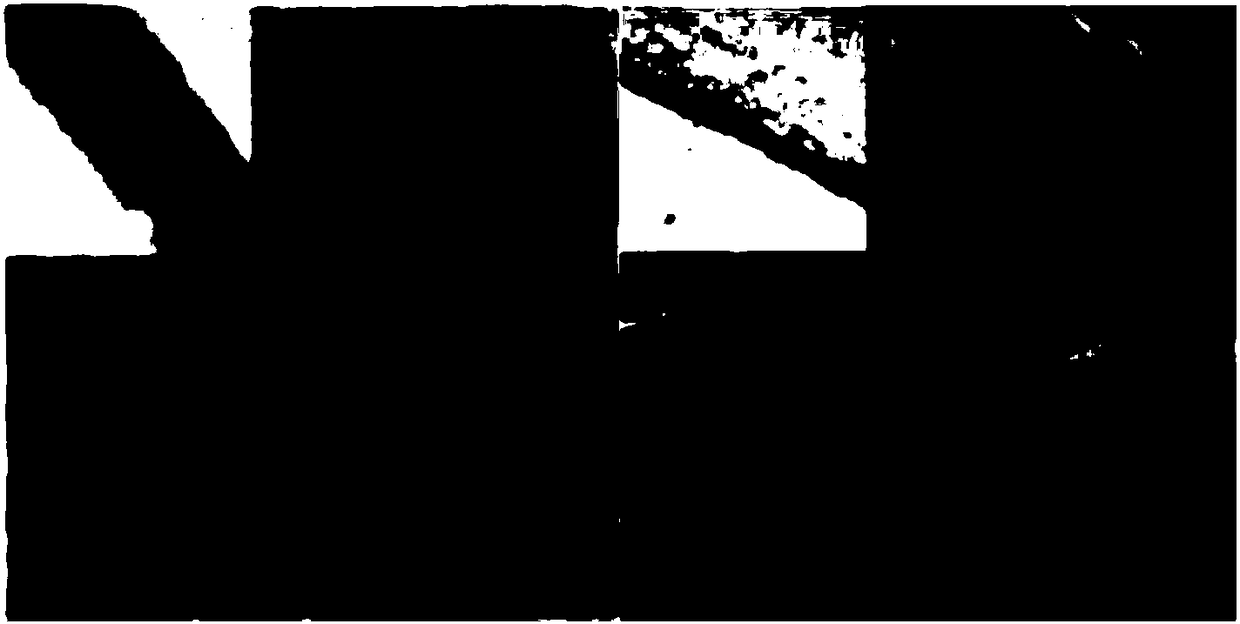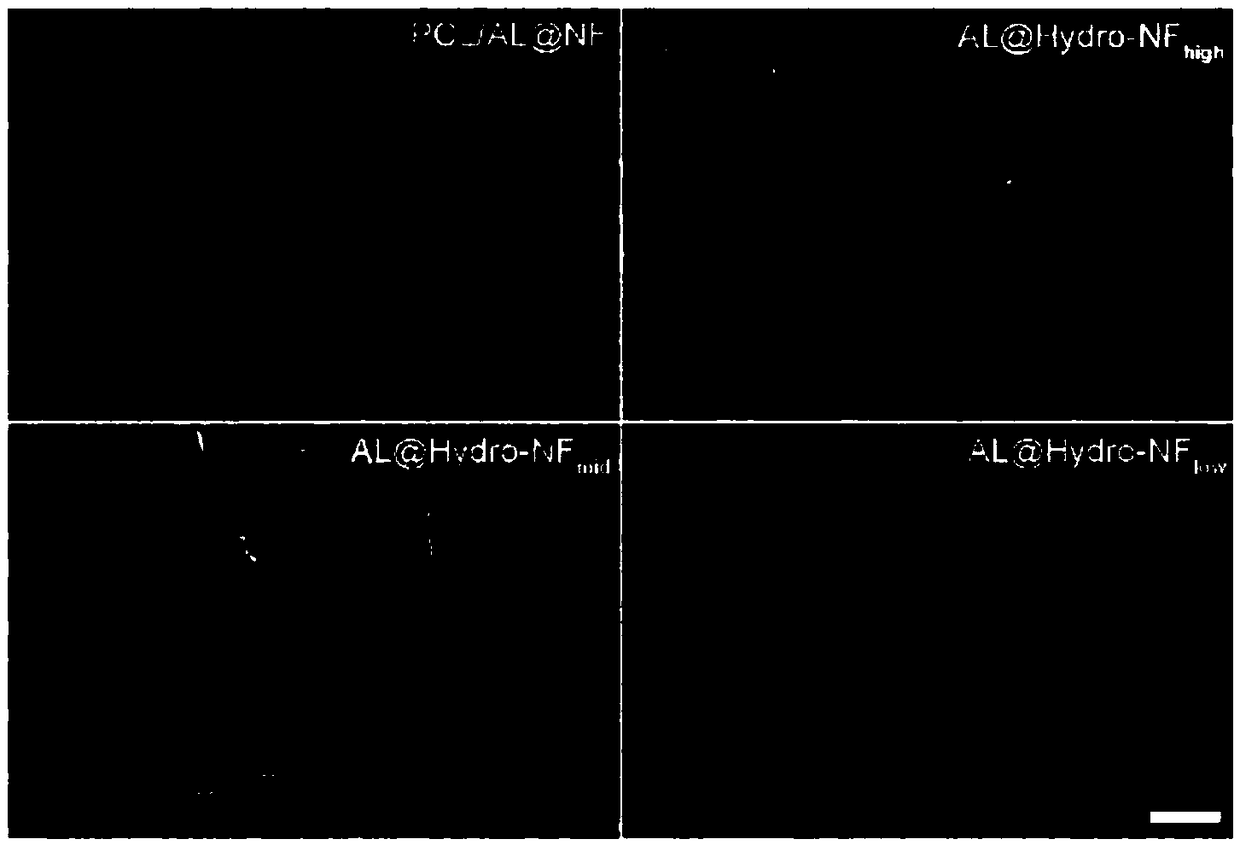Preparation method of alginate-hydrogel nanometer fiber scaffold
A nanofiber, alginate technology, applied in nanotechnology, nanotechnology, nanomedicine, etc., can solve the problems of not easy displacement, three-dimensional displacement, etc., to optimize the penetration depth, ensure controllability, and good biocompatibility Effect
- Summary
- Abstract
- Description
- Claims
- Application Information
AI Technical Summary
Problems solved by technology
Method used
Image
Examples
Embodiment 1
[0037] A kind of preparation method of alginate-hydrogel nanofiber support, described preparation method comprises the following steps:
[0038] 1) Mix chloroform and methanol in a volume ratio of 3:1, dissolve polycaprolactone in the chloroform / methanol mixture, and prepare a polycaprolactone solution with a polycaprolactone content of 16 wt %;
[0039] 2) Mix distilled water and dimethyl sulfoxide at a volume ratio of 19:1, dissolve sodium alginate and TritonX-100 in the mixture of distilled water and dimethyl sulfoxide, and prepare a sodium alginate solution. The content of the sodium alginate in the solution is 2wt%, and the content of the Triton X-100 in the solution is 0.5wt%;
[0040] 3) Using a double-nozzle electrospinning system, weigh 18g of the polycaprolactone solution prepared in step 1) and place it in the outer nozzle of the double-nozzle electrospinning system, weigh 20g of the sodium alginate solution prepared in step 2) and add it to the double Electrospinn...
Embodiment 2
[0047] A kind of preparation method of alginate-hydrogel nanofiber support, described preparation method comprises the following steps:
[0048] 1) Mix chloroform and methanol in a volume ratio of 3:1, dissolve polycaprolactone in the chloroform / methanol mixture, and prepare a polycaprolactone solution with a polycaprolactone content of 16 wt %;
[0049] 2) Mix distilled water and dimethyl sulfoxide at a volume ratio of 19:1, dissolve sodium alginate and TritonX-100 in the mixture of distilled water and dimethyl sulfoxide, and prepare a sodium alginate solution. The content of the sodium alginate in the solution is 2wt%, and the content of the Triton X-100 in the solution is 0.5wt%;
[0050] 3) Using a double-nozzle electrospinning system, weigh 18g of the polycaprolactone solution prepared in step 1) and place it in the outer nozzle of the double-nozzle electrospinning system, weigh 20g of the sodium alginate solution prepared in step 2) and add it to the double Electrospinn...
Embodiment 3
[0056] A kind of preparation method of alginate-hydrogel nanofiber support, described preparation method comprises the following steps:
[0057] 1) Mix chloroform and methanol in a volume ratio of 3:1, dissolve polycaprolactone in the chloroform / methanol mixture, and prepare a polycaprolactone solution with a polycaprolactone content of 16 wt %;
[0058] 2) Mix distilled water and dimethyl sulfoxide at a volume ratio of 19:1, dissolve sodium alginate and TritonX-100 in the mixture of distilled water and dimethyl sulfoxide, and prepare a sodium alginate solution. The content of the sodium alginate in the solution is 2wt%, and the content of the Triton X-100 in the solution is 0.5wt%;
[0059] 3) Using a double-nozzle electrospinning system, weigh 18g of the polycaprolactone solution prepared in step 1) and place it in the outer nozzle of the double-nozzle electrospinning system, weigh 20g of the sodium alginate solution prepared in step 2) and add it to the double Electrospinn...
PUM
| Property | Measurement | Unit |
|---|---|---|
| diameter | aaaaa | aaaaa |
| diameter | aaaaa | aaaaa |
Abstract
Description
Claims
Application Information
 Login to View More
Login to View More - R&D
- Intellectual Property
- Life Sciences
- Materials
- Tech Scout
- Unparalleled Data Quality
- Higher Quality Content
- 60% Fewer Hallucinations
Browse by: Latest US Patents, China's latest patents, Technical Efficacy Thesaurus, Application Domain, Technology Topic, Popular Technical Reports.
© 2025 PatSnap. All rights reserved.Legal|Privacy policy|Modern Slavery Act Transparency Statement|Sitemap|About US| Contact US: help@patsnap.com



